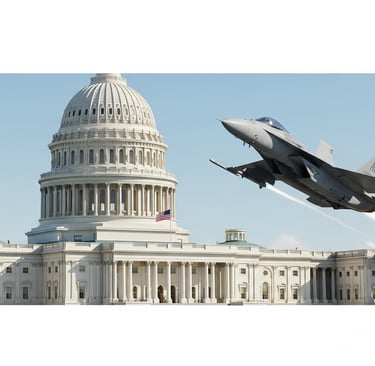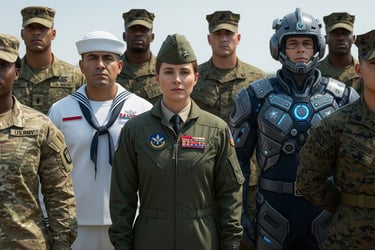PDF Tools, Image Tools, Utility Tools, Web Apps, Games, Blogs, Indian Bank IFSC codes, Indian Post PIN Codes and more…https://www.allwebapps.com/
The American Shield: A Deep Dive into U.S. Military Management, Responsibilities, and Civilian Oversight
The United States military stands as one of the most formidable and technologically advanced fighting forces in the world. Its management is a complex tapestry of hierarchical structures, clearly defined responsibilities, and a deeply ingrained principle of civilian control, born from the nation's historical aversion to a powerful standing army. This intricate system is designed to provide robust national security while safeguarding the democratic principles upon which the nation was founded.


The American Shield: A Deep Dive into U.S. Military Management, Responsibilities, and Civilian Oversight
The United States military stands as one of the most formidable and technologically advanced fighting forces in the world. Its management is a complex tapestry of hierarchical structures, clearly defined responsibilities, and a deeply ingrained principle of civilian control, born from the nation's historical aversion to a powerful standing army. This intricate system is designed to provide robust national security while safeguarding the democratic principles upon which the nation was founded.
I. A Unified Structure with Diverse Capabilities: The Organization of the U.S. Military
The U.S. military is not a monolithic entity but a collection of distinct branches, each with its own culture, expertise, and primary domain of operations. These branches fall under the civilian leadership of the Department of Defense (DoD).
The Service Branches:
U.S. Army: The oldest and largest branch, the Army is the nation's principal land-based force. Its responsibilities include sustained land combat, occupation, and peacekeeping operations. It is organized into a hierarchical structure of units ranging from small fire teams to large army corps.
U.S. Navy: Dominating the maritime domain, the Navy's mission is to maintain freedom of the seas, project power ashore, and provide a strategic nuclear deterrent through its ballistic missile submarines. Its fleets, composed of aircraft carriers, submarines, cruisers, destroyers, and amphibious ships, are deployed globally.
U.S. Air Force: Responsible for air and space superiority, the Air Force provides global reach and power through its fleet of bombers, fighters, tankers, and transport aircraft. It also operates the nation's military satellite systems, crucial for communication, navigation, and intelligence.
U.S. Marine Corps: A unique force, the Marine Corps is an expeditionary and amphibious rapid-reaction force. While it operates in close coordination with the Navy, it maintains its own distinct command structure and is capable of combined arms operations on land, at sea, and in the air.
U.S. Space Force: The newest branch, established in 2019, is responsible for organizing, training, and equipping forces to protect U.S. and allied interests in space and to provide space capabilities to the joint force.
U.S. Coast Guard: While it operates under the Department of Homeland Security during peacetime, the Coast Guard is considered a branch of the armed forces and can be transferred to the Department of the Navy during times of war. Its multifaceted responsibilities include maritime law enforcement, search and rescue, and port security.
The Unified Combatant Commands (UCCs):
For operational purposes, the forces from these various branches are organized into Unified Combatant Commands. These commands are joint forces, meaning they comprise elements from at least two service branches, and are responsible for a specific geographic area of the world (e.g., U.S. Indo-Pacific Command, U.S. European Command) or a specific function (e.g., U.S. Strategic Command, U.S. Cyber Command). The commanders of these UCCs report directly to the Secretary of Defense and the President. This structure ensures a unified and coordinated military effort across the globe.
II. The Core Mission: Ensuring the Safety of the Nation
The primary responsibility of the U.S. military is to provide for the common defense of the nation. This is achieved through a multi-pronged approach encompassing deterrence, defense, and power projection.
Deterrence: A cornerstone of U.S. national security policy is the concept of deterrence – convincing potential adversaries that the costs of attacking the United States or its allies would far outweigh any potential benefits. This is accomplished through the maintenance of a strong and technologically superior military, a credible nuclear deterrent, and a global network of alliances.
Defense: In the event that deterrence fails, the military is tasked with defending the nation from attack. This includes air and missile defense, maritime security, and the ability to defeat enemy forces on land. The North American Aerospace Defense Command (NORAD), a bi-national U.S. and Canadian organization, provides continuous aerospace warning and control.
Power Projection: The ability to project military force anywhere in the world is a key element of U.S. strategy. This allows the nation to respond to crises, protect its interests abroad, and support its allies. This capability is underpinned by the global presence of the U.S. Navy, the strategic airlift and long-range strike capabilities of the Air Force, and the expeditionary nature of the Marine Corps and Army.
III. A Cornerstone of Democracy: Civilian Control of the Military
A fundamental tenet of the American political system is the principle of civilian control of the military. This means that the ultimate authority and decision-making power over the armed forces rests with the elected civilian leadership, not with military officers.
Historical Fears and Philosophical Underpinnings:
The framers of the U.S. Constitution were deeply skeptical of large, permanent standing armies. Their experiences with the British monarchy's use of military force to suppress dissent instilled a profound fear that a powerful military could become a tool of tyranny and undermine republican government. They believed that a military beholden only to its own leadership could threaten the liberties of the people it was meant to protect. This fear is a primary reason why the Constitution deliberately divides military authority.
Constitutional and Legal Safeguards:
To institutionalize civilian control, the Constitution establishes a clear chain of command and a system of checks and balances:
The President as Commander-in-Chief: The President of the United States, a civilian elected official, is the supreme commander of the armed forces. This places the ultimate military authority in the hands of the nation's chief executive.
Congressional Authority: Congress holds significant power over the military. It alone has the power to declare war, raise and support armies, provide and maintain a navy, and make rules for the government and regulation of the land and naval forces. Crucially, Congress controls the military's budget through the power of the purse, providing a powerful check on the executive branch's military ambitions.
The Secretary of Defense: The head of the Department of Defense is a civilian appointed by the President and confirmed by the Senate. By law, this individual must be out of uniform for a specified period before taking office, further reinforcing civilian oversight.
The Posse Comitatus Act: This federal law generally prohibits the use of the U.S. military for domestic law enforcement purposes, further separating the military from the civilian populace and preventing its use as a domestic police force.
Precautions and Ongoing Debates:
The principle of civilian control is not static and requires constant vigilance. There are ongoing debates and precautions in place to maintain this delicate balance:
Professional Military Education: Military officers are instilled with the principle of civilian control throughout their careers. They are taught to provide candid and professional military advice to their civilian superiors but to ultimately execute the lawful orders they are given.
Public and Media Scrutiny: An informed public and a free press play a crucial role in holding both military and civilian leaders accountable for their decisions regarding the use of military force.
The Role of the Chairman of the Joint Chiefs of Staff: The Chairman is the highest-ranking military officer and the principal military advisor to the President and Secretary of Defense. However, the Chairman is not in the operational chain of command, a distinction designed to prevent the concentration of too much military power in a single individual.
In conclusion, the management of the U.S. military is a dynamic and multifaceted system. Its structure is designed for global reach and operational effectiveness across all domains of warfare. Its primary responsibility remains the unwavering protection of the United States and its interests. Yet, interwoven into the very fabric of this powerful institution is a deep-seated and constitutionally enshrined commitment to civilian control. This enduring principle, born from the fears of the founding generation, serves as a constant reminder that in a democracy, the military is the servant of the people, not its master, ensuring that the nation's shield never becomes a sword turned inward.


